Keynote Speaker
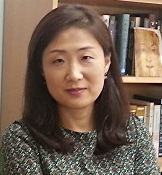 Sue Moon received her B.S. and M.S. from Seoul National University, Seoul, Korea, in 1988 and 1990, respectively, all in computer engineering. She received a Ph.D. degree in computer science from the University of Massachusetts at Amherst in 2000. From 1999 to 2003, she worked in the IPMON project at Sprint ATL in Burlingame, California. In August of 2003, she joined KAIST and now teaches in Daejeon, Korea. She served as TPC chair for WWW2013, APSys 2012, ACM Multimedia 2004, as well as in the IEEE Internet Award Committee. She won the 2012 Knowledge Creation Award by the Ministry of Education, Science, and Technology, the 2012 Young Engineer’s Award by the National Academy of Engineering of Korea, 2009 Amore Pacific Award for Outstanding Women in the Sciences, and several awards for excellence at KAIST.
Sue Moon received her B.S. and M.S. from Seoul National University, Seoul, Korea, in 1988 and 1990, respectively, all in computer engineering. She received a Ph.D. degree in computer science from the University of Massachusetts at Amherst in 2000. From 1999 to 2003, she worked in the IPMON project at Sprint ATL in Burlingame, California. In August of 2003, she joined KAIST and now teaches in Daejeon, Korea. She served as TPC chair for WWW2013, APSys 2012, ACM Multimedia 2004, as well as in the IEEE Internet Award Committee. She won the 2012 Knowledge Creation Award by the Ministry of Education, Science, and Technology, the 2012 Young Engineer’s Award by the National Academy of Engineering of Korea, 2009 Amore Pacific Award for Outstanding Women in the Sciences, and several awards for excellence at KAIST.
Invited Speakers
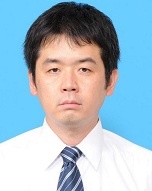 Hirokazu Takahashi is a senior research engineer of NTT Network
Innovation Laboratories. He received the B.E. and M.E. degrees in
electrical engineering from Nagaoka University of Technology in 2000 and
2002, respectively. His current research focuses on high-performance
packet processing techniques.
Hirokazu Takahashi is a senior research engineer of NTT Network
Innovation Laboratories. He received the B.E. and M.E. degrees in
electrical engineering from Nagaoka University of Technology in 2000 and
2002, respectively. His current research focuses on high-performance
packet processing techniques.
 Kavé Salamatian has been a full professor of computer science at University of Savoie from 2009. His main areas of researches are Internet measurement and modelling and networking information theory. He was previously reader at Lancaster University, UK and associate professor at University Pierre et Marie Curie. Kavé has graduated in 1998 from Paris SUD-Orsay university, where he worked on joint source channel coding applied to multimedia transmission over Internet for his PhD. In a former life, he graduated with a MBA, and worked on market floor as a risk analyst and on enjoyed being an urban traffic modeler for some years.
Kavé Salamatian has been a full professor of computer science at University of Savoie from 2009. His main areas of researches are Internet measurement and modelling and networking information theory. He was previously reader at Lancaster University, UK and associate professor at University Pierre et Marie Curie. Kavé has graduated in 1998 from Paris SUD-Orsay university, where he worked on joint source channel coding applied to multimedia transmission over Internet for his PhD. In a former life, he graduated with a MBA, and worked on market floor as a risk analyst and on enjoyed being an urban traffic modeler for some years.
During the past decade he has pursued an active research in Network security in particular in Anomaly/Attack detection and on application recognition, where he is a well-known expert with several papers with more than 300 citations.
From 2002 to 2005 he has acted as the coordinator of the Metropolis project that deployed the first large scale Internet measurement network in France. After that he has been several years coordinator of the STIC-ASIA program of cooperation between France and Asia on Internet Measurements. In this context he has done several long visits to Japan and South Korea where he held invited professor positions. He has co-advise several Asian Phd students in Internet Measurement.
From 2011 he is holding a research chair at the Chinese Academy of Science where he have a strong research relationship with China on Future Internet Architecture. He has published in the past couple of year several papers on Chinese social networks like Weibo, RenRen as well as PPTV and Baidu.
During the past years, Kavé Salamatian have developed a multi disciplinary research activity on Internet Science. He has been the Technical Committee Chair of the First "Internet Science" Conference that was organized in April 2013 in Brussels.
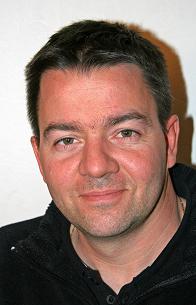 Eric Fleury is a professor at ENS Lyon, Computer Science Department since 2007. The ENS Lyon is one of the four Ecolesnormalessupérieures in France. Eric Fleury is the scientific leader of the INRIA D-NET research team / INRIA Grenoble - Rhône-Alpes research centers . D-NET team is located at ENS Lyon and hosted by IXXI. Eric is also in the scientific board and in the steering comitee of the IXXI: Complex Systems Institute.
Eric Fleury is a professor at ENS Lyon, Computer Science Department since 2007. The ENS Lyon is one of the four Ecolesnormalessupérieures in France. Eric Fleury is the scientific leader of the INRIA D-NET research team / INRIA Grenoble - Rhône-Alpes research centers . D-NET team is located at ENS Lyon and hosted by IXXI. Eric is also in the scientific board and in the steering comitee of the IXXI: Complex Systems Institute.
From 2003 to 2007, Eric Fleury was a professor at the INSA de Lyon. He received his Master degree in Computer science from EcoleNormaleSupérieure de Lyon, France in 1992. He received his PhD, degree in Computer Science, 1996 in communication and routing in distributed architectures from EcoleNormaleSupérieure de Lyon , and theHabilitation a Diriger des Recherches specializing in group communication in computer networks in 2002 from the Insa de Lyon. From 1998 to 2003, he was a full research officer at INRIA (the french national institute for research in computer science and control). First in the RESEDAS project in Nancy and then in the ARES project since 2002. His research interests are in the area of wireless network (ad hoc, sensor), pervasive communication and next generation communication network. Until 2007, he was co-heading the INRIA ARES project and he was the co-director of the CITI Lab (Insa de Lyon). He is coordinator for ENS Lyon, UCBL and INSA de Lyon of the research cluster ISLE (n°2) Rhône-Alpes (Computer, Signal and embeded systems)
Professor Fleury was a Visiting Scientist at Michigan State University during the 1997/98 academic year in the research team of Professor Philip K. McKinley. He was the program chair or co-chair of the following events: ACM DIALM, IEEE MSA, AlgoTel. He was the editor of the proceedings of these conferences and is the author of a book chapter on active networking. He is involved in many research projects in wireless networks and autonomic networking in France and Europe. Since 2001, head of the ResCom Networking group (600 researchers) of the CNRS National Coopera- tive Structure « GDR ASR » on Architecture, Networks and Systems, member of the steering committee of the GDR ASR.
PhD Advisor of a dozen of candidates, all currently employed as research officers at Inria (G. Chelius, Nathalie Mitton), CNRS (F. Theoleyre), as assistant professors or in private R&D labs. Currents students are working on dynamic community uncovering, on Individual Based Investigation of Resistance Dis- semination and on Complex networks and overlapping community detection.
From September 2003 to September 2007, Professor Eric Fleury was the chair of the master in Networking, Telecommunications and Services inside the Master of research MaRIA of the University Lyon 1, INSA de Lyon, University Lyon 2, ECL.
From September 2007 to September 2009, Eric Fleury was the chair of the MASTER in fundamental computer science at ENS Lyon. Since September 2007 Eric Fleury is in charge of the new option in modeling complex systems for the Computer Science department. Since September 2009, Eric Fleury is the head of the Computer Science department of ENS Lyon
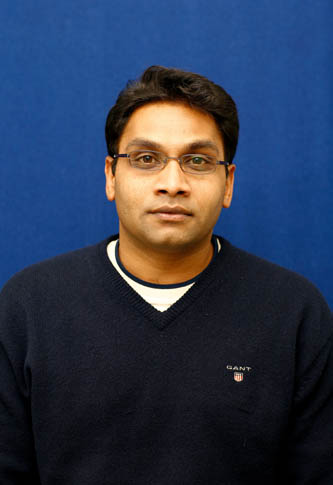 Sasitharan Balasubramaniam (Sasi) received his Bachelors of Engineering (Electrical and Electronic) and Ph.D degrees from the University of Queensland, Australia, in 1998 and 2005, respectively, and Masters of Engineering Science (Computer and Communication Engineering) degree in 1999 from the Queensland University of Technology, Australia. After completion of his Ph.D, Sasi joined the Telecommunication Software & Systems Group, Waterford Institute of Technology, Ireland where his research focused on bio-inspired communication networks, including routing and resource management, green communication networks, as well as molecular communications, which he started in 2007.
Sasitharan Balasubramaniam (Sasi) received his Bachelors of Engineering (Electrical and Electronic) and Ph.D degrees from the University of Queensland, Australia, in 1998 and 2005, respectively, and Masters of Engineering Science (Computer and Communication Engineering) degree in 1999 from the Queensland University of Technology, Australia. After completion of his Ph.D, Sasi joined the Telecommunication Software & Systems Group, Waterford Institute of Technology, Ireland where his research focused on bio-inspired communication networks, including routing and resource management, green communication networks, as well as molecular communications, which he started in 2007. In 2009, he successfully received the Science Foundation Ireland Starter Investigator Research Grant, which allowed him to create a Bio-Inspired Research Unit. In 2013, Sasi joined the Nano Communication Centre, Department of Electronic and Communication Engineering, Tampere University of Technology, Finland, where he leads the molecular communication research track. In September 2014, he received the Academy of Finland Research Fellow grant that allows him to create an independent research group. In total he has attracted €1.2 million in research funding. Sasi has published 35 transactions/journal/magazine publications, 2 book chapters, and 61 peer reviewed conference papers and actively participates in various conference committees.
He was the TPC co-chair for ACM NANOCOM 2014 and IEEE MoNaCom2011, both conferences which he co-founded, and in 2015 he is the General co-chair for the ACM NANOCOM 2015. He is currently an editor for the IEEE Internet of Things journal, Elsevier Nano Communication Networks, as well as Elsevier Swarm and Evolutionary Computation journals. His current research interests include molecular communications as well as the Internet of Nano Things. Sasi is currently an IEEE Senior Member. More information about Sasi can be found at http://www.cs.tut.fi/~balasubs/.
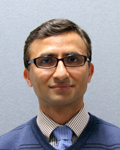 Ved P. Kafle is a Senior Researcher of communication networks at the National Institute of Information and Communications Technology (NICT). He also holds a concurrent position of a Visiting Associate Professor at the University of Electro-Communications, Tokyo and teaches advanced network architectures to graduate students. He has been involved in the design, implementation, modeling and evaluation of algorithms, protocols, and architectures for new generation networks (NWGN) or the future Internet.
Ved P. Kafle is a Senior Researcher of communication networks at the National Institute of Information and Communications Technology (NICT). He also holds a concurrent position of a Visiting Associate Professor at the University of Electro-Communications, Tokyo and teaches advanced network architectures to graduate students. He has been involved in the design, implementation, modeling and evaluation of algorithms, protocols, and architectures for new generation networks (NWGN) or the future Internet. In particular, his current research interests include new naming and addressing schemes, ID/locator split architectures, name resolution, routing protocols, integration of heterogeneous network-layer protocols, integration of resource-constrained sensor networks into the Internet, information-centric networking, distributed mobility management, and security, privacy and trust. He was a member of the AKARI Architecture Design Project for New Generation Network, where he designed and implemented the HIMALIS (Heterogeneity Inclusion and Mobility Adaptation through Locator ID Separation) architecture.
He has published more than 50 research papers in referred journals, magazines and conferences. He has also edited four ITU-T Recommendations related with the Next Generation Network (NGN) and future networks and submitted several contributions to these and other Recommendations. He received the ITU Association of Japan Award in 2009 for his active involvement in the ITU standardization activities. He also received Best Paper Awards at two ITU Kaleidoscope Academic Conferences held in Mar del Plata, Argentina in 2009 and in St. Petersburg, Russian Federation in 2014. He received the B.E. in Electronics and Electrical Communications from Punjab Engineering College (now PEC University of Technology) Chandigarh, India, the M.S. in Computer Science and Engineering from Seoul National University, South Korea, and the Ph.D. in Informatics from the Graduate University for Advanced Studies, Japan. Dr. Kafle is a Senior Member of the IEEE and a member of the IEICE. He is also serving in the editorial board of the IEICE Transactions on Communications.
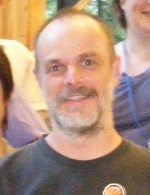 Rodney Van Meter
received a B.S. in engineering and applied science
from the California Institute of Technology in 1986, an M.S. in
computer engineering from the University of Southern California in
1991, and a Ph.D. in computer science from Keio University in 2006.
His current research centers on quantum computer architecture and
quantum networking. Other research interests include storage systems,
networking, and post-Moore's Law computer architecture. He is now an
Associate Professor of Environment and Information Studies at Keio
University's Shonan Fujisawa Campus. Dr. Van Meter is a member of
AAAS, ACM and IEEE. He is the author of the book _Quantum Networking_
(Wiley-iSTE, 2014).
Rodney Van Meter
received a B.S. in engineering and applied science
from the California Institute of Technology in 1986, an M.S. in
computer engineering from the University of Southern California in
1991, and a Ph.D. in computer science from Keio University in 2006.
His current research centers on quantum computer architecture and
quantum networking. Other research interests include storage systems,
networking, and post-Moore's Law computer architecture. He is now an
Associate Professor of Environment and Information Studies at Keio
University's Shonan Fujisawa Campus. Dr. Van Meter is a member of
AAAS, ACM and IEEE. He is the author of the book _Quantum Networking_
(Wiley-iSTE, 2014).
 Peng He
is currently an assistant researcher in Institute of Computing Technology, Chinese Academy of Sciences(ICT, CAS). He received his Ph.D. degree in computer architecture from ICT/CAS in 2014. His main research interests include high performance packet processing system, efficient packet classification algorithms, and network function virtualization (NFV).
Peng He
is currently an assistant researcher in Institute of Computing Technology, Chinese Academy of Sciences(ICT, CAS). He received his Ph.D. degree in computer architecture from ICT/CAS in 2014. His main research interests include high performance packet processing system, efficient packet classification algorithms, and network function virtualization (NFV).


 ACM SIGCOMM
ACM SIGCOMM





